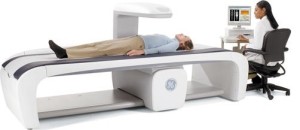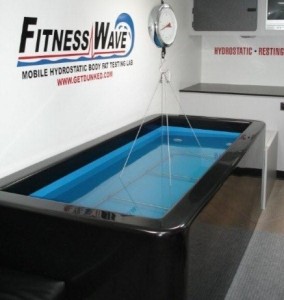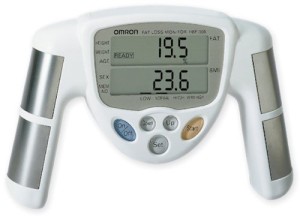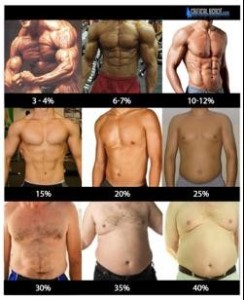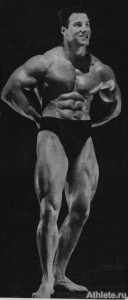Prelude:
In a recent blog post for the Denver Post, Troy E. Renck is quoted as saying 2016 second round draft pick Adam Gotsis is currently 298 lbs with 10% body fat. Perpetuation of this quote as fact led me to realize that few people have an understanding of body fat levels, what they look like, and how they apply to athletes.
If you are interested in part one and missed it.
Introduction:
What is body fat? On a basic level, I am sure we are all familiar with adipose tissue or fat. However, less people are familiar with how and why the body stores fat. Fat serves two purposes, energy storage and body insulation. With that in mind, I think we can all understand why zero would be an unacceptable and physically impossible level of body fat. Let’s dive into what levels are achievable, common and necessary for athletic performance. We will also explore how it is measured and the variations of those measurements.
Fat Vs. Lean Mass:
For our purposes the body is composed of two things, lean mass and fat. Lean mass consists of all the things that are not fat such as bones, muscle tissue, nerves, organs, blood, etc.
If you stand on a scale you get a measurement of your overall mass. Subtract the fat and you have lean mass.
Testing methods:
- Skinfold calipers – Hand held calipers used to measure adipose tissue by measuring skin folds in various spots on the body.
- 3% error
- Inexpensive
- Quick
- Bod Pod – Determines body fat volume through air displacement analysis and then run through an algorithm
- 2-3.5% error
- Expensive
- 10 minutes is stable environment
- Trained technician
- DEXA – Body scan using xray to determine bone and soft tissue compositions.
- 1.5-2% error
- Trained professional
- Limit of 4 scans a year due to radiation exposure
- Hydrostatic weighing – Based upon Archimedes Principle which states that the buoyant force on a submerged object is equal to the weight of the fluid that is displaced by the object. Lean tissue is more dense than water, and fat tissue is less dense than water (muscle sinks, fat floats).
- 2.5% error
- Time consuming
- Not used often
- Bioelectric Impedance – Relies on concept that lean and fat tissues have different conductive properties as a small current is passed through the body.
- 3.5-5% error
- Inexpensive
- Quick and easy
- Results impacted by hydration levels
- Visual Estimate – Visually estimate a person’s body fat.
- Unknown error
- Inexpensive
- Quick and easy
- Requires trained eye and understanding of body composition
After reviewing all the options for measuring it’s obvious that DEXA is the way to go for accuracy. It is also obvious that skin fold calipers are the tried and true method as they are cheap, easy to use and readily available. The 3% error is only slightly higher than the more expensive testing methods. In other words, the increased accuracy of the bod pod, hydrostatic weighing and DEXA are not worth the trouble.
Body fat in sports:
The following table comes from Sport Nutrition, Second Edition, by Asker Jeukendrup, PhD, and Michael Gleeson, PhD.
| Sport | Male | Female | Sport | Male | Female |
| Baseball | 12-15% | 12-18% | Rowing | 6-14% | 12-18% |
| Basketball | 6-12% | 20-27% | Shot Putters | 16-20% | 20-28% |
| Body building | 5-8% | 10-15% | Skiing (X country) | 7-12% | 16-22% |
| Cycling | 5-15% | 15-20% | Sprinters | 8-10% | 12-20% |
| Football (Backs) | 9-12% | No data | Soccer | 10-18% | 13-18% |
| Football (Linemen) | 15-19% | No data | Swimming | 9-12% | 14-24% |
| Gymnastics | 5-12% | 10-16% | Tennis | 12-16% | 16-24% |
| High/long Jumpers | 7-12% | 10-18% | Triathlon | 5-12% | 10-15% |
| Ice/field Hockey | 8-15% | 12-18% | Volleyball | 11-14% | 16-25% |
| Marathon running | 5-11% | 10-15% | Weightlifters | 9-16% | No data |
| Racquetball | 8-13% | 15-22% | Wrestlers | 5-16% | No data |
Athletes may be familiar with the recommended healthy body fat range for adult males (10-22 percent) and females (20-32 percent). Different healthy ranges suit different individuals and lower (or even higher) could be appropriate for different athletes, but these numbers may serve as valuable reference points. It is important to keep in mind that these values are more than likely based on skinfold caliper analysis. Athletes should avoid extremely low body fat, which can be associated with impaired physiological function in both males and females. It is commonly suggested that 5 percent body fat for men and 12 percent for women are the minimum required for healthy endocrine and immune function.
These next numbers come from Ackland T, Lohman T, Sundgot-Borgen J, Maughan R, Meyer N, Stewart A, Wolfram M. “Current Assessment of Body Composition in Sport.”
2006 – 2013 NFL Combine testing (BodPod)
| Position | # of Players | % Fat Average | Body Weight Average (lb) | Lean Mass (lb) | Avgerage Height |
| DB | 463 | 9.7 | 199.8 | 180.4 | 6’0″ |
| WO | 360 | 9.4 | 202.6 | 183.6 | 6’1″ |
| LB | 270 | 13.5 | 239.3 | 206.9 | 6’2″ |
| TE | 147 | 14.2 | 252.6 | 216.73 | 6’4″ |
| RB | 263 | 11.8 | 217.1 | 191.5 | 5’11” |
| QB | 159 | 14.3 | 223.4 | 191.5 | 6’3″ |
| DL | 445 | 19.4 | 283.2 | 228.3 | 6’4″ |
| OL | 420 | 24.6 | 313.0 | 236.0 | 6’5″ |
| PK | 86 | 15.9 | 206.6 | 173.8 | No Data |
| ST | 15 | 20.2 | 242.6 | 193.6 | No Data |
As you may already know the trends for weight and body fat percentage decrease as you move from linemen to skill positions. The body can only support so much lean mass naturally. This lean mass can be estimated for every individual using height, wrist and ankle measurements as shown in the natural genetic potential link in part 1.
If Adam Gotsis was truly 280+ and 10% body fat, you can see that he would be so far outside of the mean that his genetic freakishness would be known far and wide. He would have been the talk of the draft because of his size. Not to say that Adam isn’t a hard worker or a great athlete, but in terms of size and strength he fits the average for defensive linemen.
Lack of understanding or mis-representation:
We all know athletes are under the microscope. They all want to be the biggest, fastest, most talented and either they, or someone pulling for them, is going to find ways to claim they are just that. Lucky for them, in this instance, the general public’s knowledge of body fat is pretty low. They don’t know what it looks like, how it is achieved, or how it is measured. This means someone can claim Gotsis is 10% body fat and wants to be 6% body fat by the end of summer and who would know?!
Let’s do a quick exercise. We will pretend Gotsis is the 10% body fat that someone has claimed (he isn’t btw, he is close to 20%). At 285 lbs and 10% body fat, Gotsis has 256.5 lbs of lean mass. There are only two ways for Gotsis to achieve the goal of 6% body fat. He can lose fat till he reaches 6% or he can gain muscle until he has enough lean mass to be 6%. He can lose 10 lbs of fat which is a very achievable goal if you read part 1 and understand a lb of weight loss per week is healthy. He could also try to gain 12 lbs of muscle, which is impossible in the time frame we are talking about.
This shows that either he is perpetuating an idea to make people think he is a super beast or he has no concept of what is actually achievable. I’d imagine he knows more than the average bloke, so he is really just spouting BS because he knows most people won’t know any better.
Adam Gotsis at a CLAIMED 10% body fat (6’5” 280 lbs)
Reg Park at 10% bodyfat (6’1” 210 lbs)


